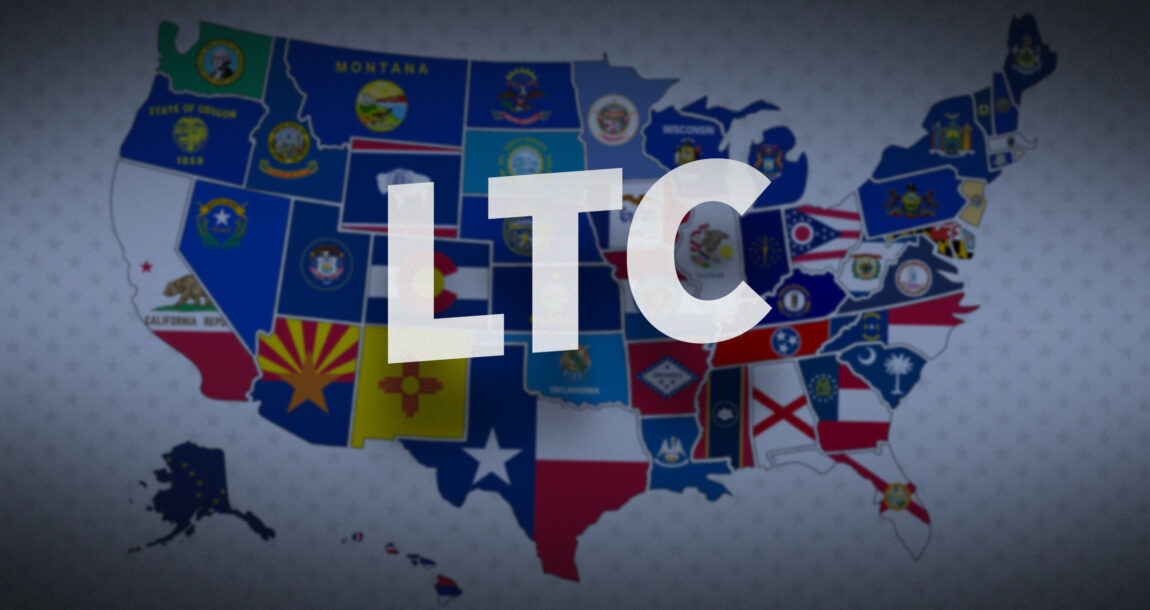Long-term care: A view from the states

Medicaid expenditures continue to rise as a percentage of total state spending, and much of that goes toward long-term care.
In some states, Medicaid spending already has reached 40% of total state spending. A study conducted for the Minnesota Department of Human Services projected Medicaid expenditures for long-term care would increase 70% between 2023 and 2035.
With an increasing number of Americans needing care, states are looking at how they can mitigate these costs without any significant federal action. Roger Moore, policy director with the National Association of Insurance and Financial Advisors, gave a rundown of how the states are looking at funding long-term care during NAIFA’s Peak 65 Impact Day.
Washington state's long-term care program
Washington state enacted the nation’s first state-run, statewide long-term care benefit program, known as WA Cares. WA Cares provides a lifetime maximum benefit of $36,500, adjusted annually for inflation, which will be available beginning July 2026.
WA Cares is funded by a mandatory 0.58% payroll tax from all workers in the state, which began in July 2023, with certain exemptions allowed. A worker in Washington must contribute to the fund for 10 years before accessing WA Cares benefits.
In 2024, the state legislature passed a bill that would enable those who contribute to WA Cares but move out of state to access benefits.
In November, voters were given the opportunity to vote on Ballot Initiative 2124, which would have given workers the option to opt out of the mandatory payroll tax that funds WA Cares, which supporters of Washington Cares said would have led to the demise of the program. The initiative did not pass.
California looks at feasibility
In 2023, California’s Long-Term Care Insurance Taskforce considered the feasibility of establishing a program similar to WA Cares. The taskforce provided benefit options ranging from $36,000 to $144,000, with contribution rates between 0.6% and 3%.
The panel submitted findings to the California Department of Insurance in December 2023, although lawmakers have yet to come to a decision.
Minnesota eyes solutions
In 2023, Minnesota’s LTSS Funding and Services Initiative Study offered three possible solutions to address the state’s long-term care needs: care navigation and support services, a Medicare companion product, and an obligatory state insurance program. Minnesota has not taken any action toward a statewide LTC program.
“Ultimately, the problem is that funding long-term care is a big ask,” Moore said. “If you’re developing these big state programs, there’s concern over whether people want it, whether they will vote for it and how much will it cost.
“States have considered it but except for Washington, we haven’t seen anyone take that big dive yet.”
© Entire contents copyright 2024 by InsuranceNewsNet.com Inc. All rights reserved. No part of this article may be reprinted without the expressed written consent from InsuranceNewsNet.com.
Susan Rupe is managing editor for InsuranceNewsNet. She formerly served as communications director for an insurance agents' association and was an award-winning newspaper reporter and editor. Contact her at [email protected].





Year-end Roth IRA conversions: What you need to know before the deadline
How financial advisors can help clients improve financial stability
Advisor News
- Global economic growth will moderate as the labor force shrinks
- Estate planning during the great wealth transfer
- Main Street families need trusted financial guidance to navigate the new Trump Accounts
- Are the holidays a good time to have a long-term care conversation?
- Gen X unsure whether they can catch up with retirement saving
More Advisor NewsAnnuity News
- Prudential launches FlexGuard 2.0 RILA
- Lincoln Financial Introduces First Capital Group ETF Strategy for Fixed Indexed Annuities
- Iowa defends Athene pension risk transfer deal in Lockheed Martin lawsuit
- Pension buy-in sales up, PRT sales down in mixed Q3, LIMRA reports
- Life insurance and annuities: Reassuring ‘tired’ clients in 2026
More Annuity NewsHealth/Employee Benefits News
Life Insurance News
- Best’s Market Segment Report: AM Best Maintains Stable Outlook on Malaysia’s Non-Life Insurance Segment
- Report Summarizes Kinase Inhibitors Study Findings from Saga University Hospital (Simulation of Perioperative Ibrutinib Withdrawal Using a Population Pharmacokinetic Model and Sparse Clinical Concentration Data): Drugs and Therapies – Kinase Inhibitors
- Flawed Social Security death data puts life insurance benefits at risk
- EIOPA FLAGS FINANCIAL STABILITY RISKS RELATED TO PRIVATE CREDIT, A WEAKENING DOLLAR AND GLOBAL INTERCONNECTEDNESS
- Envela partnership expands agent toolkit with health screenings
More Life Insurance News